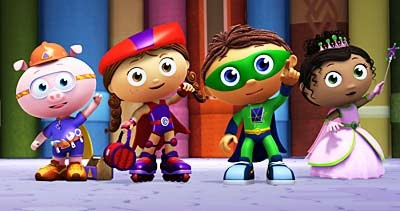 super-why
super-why
Let’s talk about “Super Why!”, specifically the main character, Super Why Whyatt. For parents navigating the sometimes choppy waters of children’s television, “Super Why?” often surfaces as an educational beacon. After all, it’s about literacy, reading, and solving problems with words, right? On the surface, it seems like exactly the kind of screen time you can feel good about. However, dig a little deeper, and you might find yourself, like many parents, developing a strong aversion to this particular show, and especially to Whyatt Beanstalk himself.
From the gratingly repetitive theme song to the central character’s, shall we say, overly dramatic personality, “Super Why!” can quickly become an exercise in parental endurance. The show centers around Whyatt, a small boy who lives in a book world (accessed from a real-world library – because why not?). Whyatt, along with his equally perplexing group of friends, transforms into the superhero Super Why to solve “SUPER BIG PROBLEMS!”
Now, these “SUPER BIG PROBLEMS!” are where the eye-rolling often begins. Imagine a scenario: Whyatt has a pebble in his shoe. This minor inconvenience is immediately elevated to a crisis of epic proportions, demanding an emergency meeting of the “Super Readers.” As a viewer, you’re likely thinking, “Just take your shoe off, Whyatt,” but that would be far too simple for our protagonist. Instead, we’re subjected to a drawn-out process of superhero transformations and literary investigations, all to address something a toddler could resolve independently in seconds.
And Whyatt, or Super Why, himself? He’s the embodiment of a drama king. Every minor hiccup is a five-alarm fire requiring his direct intervention and the rapt attention of everyone around him. Remember the episode where a character was upset and no one knew why? The groundbreaking solution, after a convoluted adventure, was simply to ask the person how they felt. Mind. Blown. It’s this level of contrived drama and seemingly obvious solutions presented as monumental discoveries that can test the patience of even the most tolerant adult.
Whyatt isn’t alone in his literary escapades. He’s accompanied by a cast of characters that add to the overall perplexing nature of the show. There’s Pig (just… Pig. No other talking animals, just Pig), Princess Pea, the vegetable enthusiast, and Red Riding Hood (who, in her superhero persona, seems to lean into a slightly questionable “Ms. Red” alter ego – let’s just leave that there). Together, they form the “Super Readers,” ready to tackle these monumental non-issues using their “powers.”
These “powers,” by the way, are loosely themed around literacy. There’s “Alphabet Power,” “Word Power,” and “Letter Power” – the distinctions between which are blurry at best. And then there’s your power, the viewer, which is apparently the “Power to Help!” It feels a bit like they tacked that one on as an afterthought. The transformation into superheroes is equally underwhelming; it mainly involves costume changes. Pig remains, well, a pig, just in a superhero outfit.
The problem-solving process involves Princess Pea magically selecting a book (usually a fairy tale), and the Super Readers then literally jump into the book using rocket ships that appear solely for this purpose. Inside the book, they search for “Super Letters” while simultaneously solving a problem for the fairy tale characters – double the problems, double the screen time! These “Super Letters” are then fed into the “SUPER DUPER… COMPUTER!” (complete with dramatic pauses before every utterance of the word “computer”) to unscramble a clue. The entire process feels like a fever dream of literacy concepts haphazardly thrown together.
Once inside the fairy tale, the show takes an even stranger turn. Super Why’s ultimate power is the ability to change the words in the book. Yes, you read that right. If Little Red Riding Hood gets eaten by the wolf, Super Why can simply rewrite the story, changing “eaten” to something more palatable, like… well, the original reviewer’s humorous example is unprintable, but you get the idea. He “fixes” the story through literary censorship, ensuring everyone gets a happy ending, conveniently aligning with whatever trivial problem Whyatt manufactured in the real world (or, rather, the three-inch-tall library person world).
This “power of censorship” is arguably the most problematic aspect of “Super Why!”. The show promotes the idea that stories, even classic fairy tales, are malleable and can be changed to suit immediate needs or preferences. While the intention might be to empower children with reading and word manipulation, the execution comes across as fundamentally altering established narratives and potentially undermining the value and integrity of original stories.
Ultimately, after navigating the convoluted plot, enduring Whyatt’s theatrics, and witnessing the rewriting of classic literature, the “SUPER BIG PROBLEM!” is invariably solved. Whyatt shakes out the pebble, walks around the leaf, or removes his sweater. The Super Readers then celebrate their victory with a song, despite the fact that the “problem” was self-created and ridiculously minor in the first place.
So, while “Super Why!” aims to be an educational show about reading and problem-solving, parents might find themselves questioning the messages it sends. Between the over-the-top drama, the bizarre plot structures, and the questionable “power of censorship,” “Super Why Whyatt” can quickly become less of a helpful educational tool and more of a source of parental frustration. Perhaps there are more subtly educational, and less dramatically irritating, shows out there to explore.

